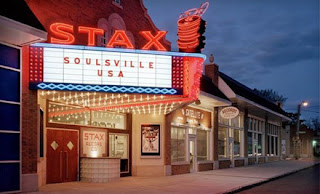 |
| Extra Place in 1934, before it became a hip landmark of decay. |
We have numerous and odd
relationships with our own recent past. And of course with liminal places of
decay and neglect. The little alleyway known as
“Extra Place” in the Lower East Side of Manhattan provides a good example.
Located just off the Bowery, the alley was in the heart of a pretty exotic
landscape during the 1970s. Plenty of urban decay, homelessness, empty lots,
empty buildings. Decline, blight, and the present becoming a crashed and
burning version of the recent past.
But the neighborhood also
buzzed with artists, writers, and musicians living in unheated lofts,
pioneering an urban frontier. The alleyway, called Extra Place, ran behind a
little club called CBGB’s, now legendary for its role in the birth of the New
York punk scene of the mid-to-late 1970s. By 1975, CBGB’s had become a new
music incubator, clubhouse, and scene, surrounded by the very real grime and despair of the Bowery. Inside,
Television, The Ramones, and Patti Smith were developing something new on a
little stage in front of an audience of local artists and non-local visitors
interested in “slumming” for the evening.
 |
| The legendary alley in 1978 (Bob Mulero). |
As one can imagine, the
alley out back wasn’t a pretty place. A dark corner in the Bowery of the
mid-1970s. This corner was a little different because pioneering artists were
peeing and puking alongside the homeless and mildly deranged. It represented a
picture-perfect backdrop of the decaying Mean Streets – so perfect it graced
the cover of the Ramones' album Rocket to Russia like a license for street cred. Bands booked in the
club often had their photos taken in the debris behind the bar – sitting on
burned out cars abandoned at the back of the dead end street. An apocalyptic
version of tourist photos in front of a local landmark. So ugly, but so hip.
 |
| A photo session in the blight, with the Ramones. |
The club was losing its
cache by the 1990s, and the neighborhood was getting cleaned up as part of the
Giuliani makeover of much of the city. CBGB’s closed in 2006, and no one cared
about the cruddy alley anymore. That is, until gentrification leaked into Extra
Place.
A few years ago, there were
a number of news stories and blog posts about developers’ plans to not only
clean and pave the alley, but to transform it into an outdoor courtyard /
retail mall. Their vision of the place was much like those seen dozens of times
over in the new New York, and hundreds of times over in other American cities
and suburbs.
 |
| Artist's rendering of the reinvented alleyway. |
Some folks were saddened,
some were outraged, but the gothic decay behind the fabeled art incubator was
swept clean in such an efficient manner that a passing tourist would never
imagine what happened in the shadows back there 30 years earlier. Now, a once
sad, scary, exciting, illicit, filthy, legendary place (depending on one’s
perspective) is considered a lost historic site by the old timers. A few period
photos have become historic documents.
A new generation of residents paints the new sidewalk with eco-friendly,
neighborhood sponsored art-graffiti with slogans like “the birthplace of punk.”
This is a facet of our
strange perspective on our own past, and our on-again-off again relationship
with the natural forces of neglect and decomposition. I doubt the visitors to
Extra Place desired to spend much time back there in 1975. Yet upon its
passing, we realize we need such dark corners. A weird nostalgia now hangs in
the sanitized air at the back of Extra Place.












